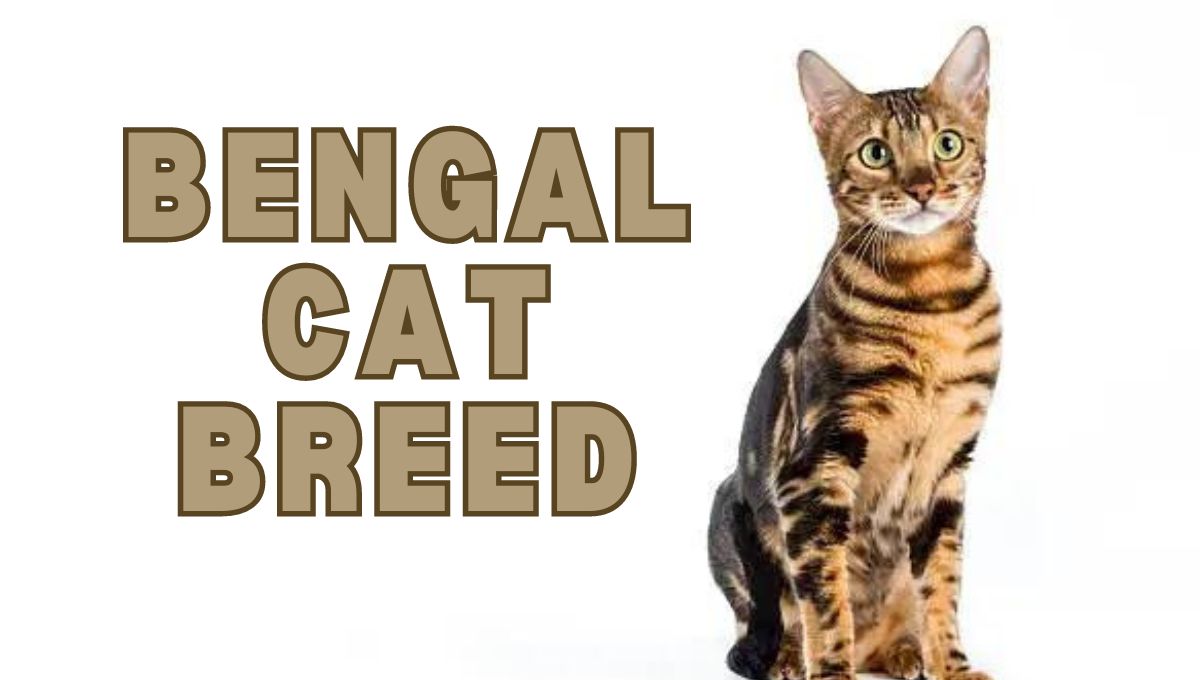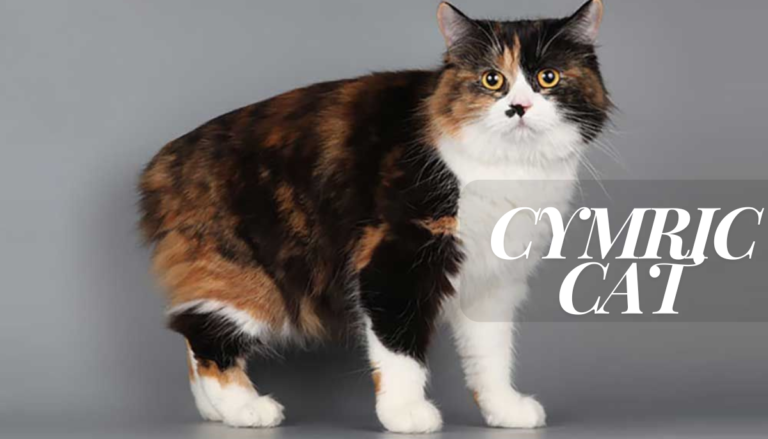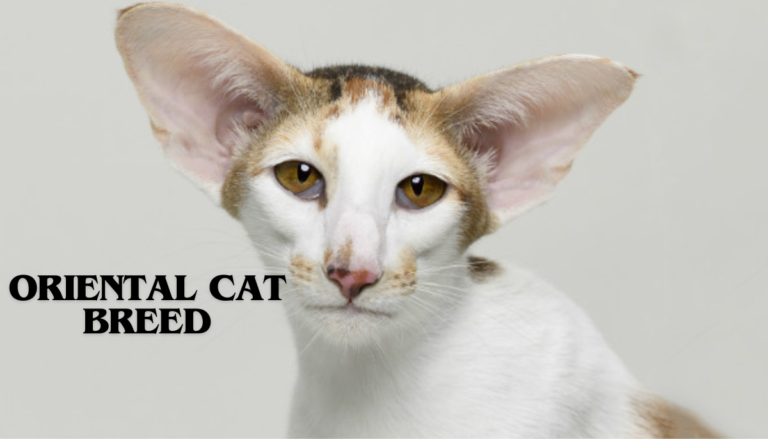Bengal Cat Breed
The Bengal cat, a striking and exotic breed, captivates with its leopard-like appearance and dynamic personality. Named after the Asian leopard cat (Prionailurus bengalensis), this breed was developed through the crossbreeding of domestic cats with the wild Asian leopard cat. The name “Bengal” signifies its wild ancestry and the cat’s jungle-like allure.
Bengal cats are renowned for their distinctive coat patterns, which resemble those of a wild leopard or ocelot. Their fur is short, silky, and comes in various colors, including brown, silver, and snow, often adorned with rosettes, marbling, or spots. This coat not only enhances their exotic look but also feels luxurious to the touch.
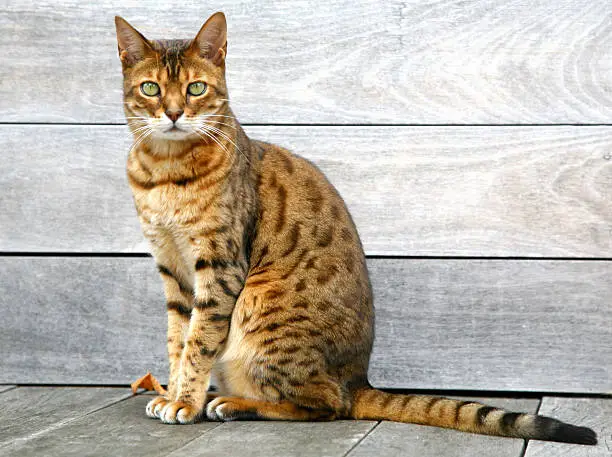
Beyond their striking appearance, Bengal cats are known for their high energy levels and playful nature. They are highly intelligent, curious, and enjoy engaging in interactive play. Bengals often form strong bonds with their owners and can be quite vocal, expressing themselves with a range of sounds. Their athleticism and agility make them excellent climbers and explorers, requiring ample space and stimulation to keep them content.
Bengal cats blend the allure of the wild with the affection and companionship of a domestic pet, making them a unique and captivating addition to any household.
Table of Contents
I. Origin and History of Bengal Cats :
Origins
- Jean Mill’s Vision
- Breeder from California in the 1960s.
- Aimed to create a domestic cat with an exotic, wild appearance.
- Crossbred domestic cats with the Asian leopard cat (Prionailurus bengalensis).
Geographical Region of Origin
- Asian Leopard Cat’s Range
- Native to Southeast Asia.
- Found in India, China, the Philippines, and Indonesia.
Breeds Involved in Formation
- Domestic Cats Used
- Egyptian Mau.
- Abyssinian.
- Domestic shorthairs.
Characteristics Influenced by Origins
- Physical Traits
- Striking coat patterns resembling wild leopards or ocelots.
- Muscular build and athletic agility.
- Behavioral Traits
- High energy levels and playfulness.
- Intelligence and curiosity.
- Strong bonds with owners and vocal nature.
Historical Significance
- Conservation Awareness
- Developed to raise awareness about wild cat conservation.
- Intended to discourage the purchase of wild-caught pets.
Folklore and Legends
- Fascination and Awe
- Creation surrounded by admiration for blending wild and domestic traits.
- Seen as a successful example of innovative breeding practices.
The Bengal cat’s unique blend of wild appearance and domestic temperament makes it a remarkable breed, celebrated for both its beauty and its engaging personality.
II. Physical Characteristic of Bengal Cats :
| Height | The average height of a Bengal cat ranges from 10 to 12 inches for males and 9 to 11 inches for females. |
| Weight | Bengal cats typically weigh between 10 to 15 pounds for males and 8 to 12 pounds for females. |
| Life Span | The average life span of a Bengal cat is between 12 to 16 years. |
| Good With | Bengal cats are compatible with families with children, other pets (with proper introduction), and active households. |
| Temperament | Bengal cats are known for their playful and energetic temperament. They are affectionate, social, vocal, and expressive. |
| Intelligence | Bengal cats are highly intelligent and quick learners. They enjoy puzzle toys and interactive play. |
| Shedding Amount | Bengal cats have low to moderate shedding. |
| Grooming | Bengal cats have low grooming needs. Weekly brushing is recommended to remove loose hair and maintain coat health. |
| Exercise Needs | Bengal cats have high exercise needs. They require daily play and mental stimulation and enjoy climbing and exploring. |
| Energy Level | Bengal cats have a very high energy level and are active and playful throughout the day. |
| Meowing Level | Bengal cats have a high meowing level, often being vocal and expressive. |
| Drool amount | Bengal cats drool minimally. |
| Coat Length/Texture | Bengal cats have a short to medium-length coat with a soft, silky texture. |
| Colors | Bengal cats come in various colors, including brown, silver, and snow (lynx, mink, and sepia). |
| Patterns | The coat patterns of Bengal cats include rosetted (spots with a darker outline), marbled (swirled pattern), and spotted (solid spots). |
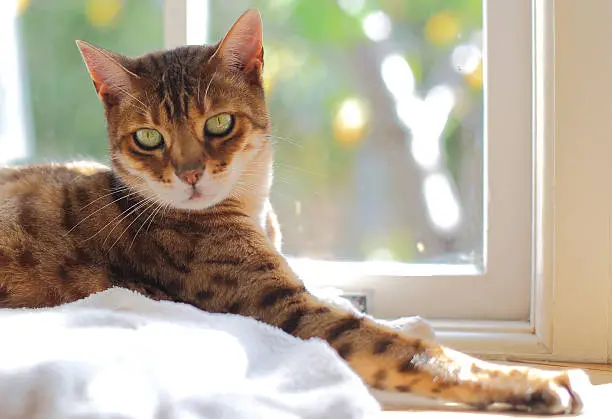
Bengal Breed Overview
The Bengal cat is a unique and striking breed known for its wild appearance, which resembles that of a leopard or ocelot. This breed combines the exotic look of wild cats with the temperament of domesticated house cats.
Size and Measurements
- Males:
- Weight: 10 to 15 pounds (4.5 to 6.8 kg)
- Length: Approximately 17 to 22 inches (43 to 56 cm) excluding the tail
- Height: Typically around 14 to 18 inches (35 to 45 cm) at the shoulder
- Females:
- Weight: 8 to 12 pounds (3.6 to 5.4 kg)
- Length: Approximately 16 to 20 inches (40 to 51 cm) excluding the tail
- Height: Generally around 13 to 16 inches (33 to 41 cm) at the shoulder
Coat Type and Texture
- Texture: The Bengal cat’s coat is one of its most defining features. It is soft, sleek, and luxurious to the touch, often described as feeling like a pelt. The coat is short to medium in length, with a dense, plush texture that is highly touchable.
- Length: The coat length is generally short but can be medium. It lies close to the body, enhancing the breed’s muscular appearance.
Color Variations and Patterns
Bengal cats exhibit a wide range of colors and patterns, which contribute to their exotic appearance. The primary patterns are spotted and marbled, each with its unique appeal.
- Spotted Pattern: This is the most common and sought-after pattern, featuring rosettes or spots that mimic the coat of a leopard. The spots can be random or aligned horizontally, creating a flowing appearance. The rosettes may have a darker outline with a lighter center, adding depth and contrast to the pattern.
- Marbled Pattern: This pattern resembles the markings of a marble stone, with swirling, flowing, and asymmetrical patterns that cover the body. The marbling should be random and horizontal, rather than vertical, to maintain the breed standard.
Common Color Variations
- Brown Spotted Tabby: The most traditional and common coloration, featuring a rich, warm background color with black or dark brown spots or marbling.
- Snow Bengal: This variation includes three main types:
- Seal Lynx Point: Features a pale, creamy background with light brown to grayish spots or marbling, and often has blue eyes.
- Seal Mink: Exhibits a slightly darker background than the Seal Lynx Point with brown to dark brown markings. Eyes are typically aqua or green.
- Seal Sepia: Shows a more intense coloration with darker background and markings. Eyes are usually green or gold.
- Silver Bengal: Has a silver or white background with black or dark gray markings. This variation lacks the warm, brown tones found in other colorations.
- Charcoal Bengal: This coloration is characterized by a darker face mask and a thick, dark dorsal stripe running from the neck to the tail, regardless of the primary coat color.
- Melanistic (Black) Bengal: These Bengals have a black coat with spots or marbling that are slightly visible as they are a shade darker than the base coat. The markings are often visible only in certain lights.
Bengal cats are not only known for their striking appearance but also for their active and playful nature. Their wild look combined with their affectionate and intelligent personality makes them a popular choice among cat enthusiasts. The breed’s variety in size, coat types, and colors ensures that there is a Bengal to suit many different preferences.

III. Temperament and Personality of Bengal Cats :
The Bengal cat breed is renowned for its striking appearance and vibrant personality. They are energetic, intelligent, and interactive cats, often described as having a “wild” side due to their ancestry but balanced by the affectionate and sociable traits of a domesticated pet.
Typical Temperament and Personality Traits
- Energetic and Playful: Bengals are highly active and playful. They have a high energy level and enjoy physical activities such as climbing, jumping, and running. They often engage in interactive play with their owners and enjoy toys that challenge their agility and intellect.
- Intelligent and Curious: Bengals are extremely intelligent cats. They are curious and love to explore their surroundings. This intelligence makes them quick learners who can be trained to perform tricks and even walk on a leash.
- Affectionate and Sociable: Despite their wild appearance, Bengals are very affectionate and enjoy human companionship. They form strong bonds with their owners and often follow them around the house. They are known to be friendly with children and other pets, provided they are properly socialized.
- Vocal and Communicative: Bengals are quite vocal and will often communicate with their owners through various sounds, including meows, chirps, and trills. They use their voices to express their needs and desires, making them very communicative pets.
General Demeanour
- Confident and Assertive: Bengals are confident cats that often display a bold and assertive demeanor. They are not usually shy or timid and can be quite assertive in seeking attention and interaction.
- Alert and Responsive: These cats are very alert and responsive to their environment. They are quick to notice changes and are often seen attentively observing their surroundings.
Common Behavioral Traits
Positive Traits:
- Playfulness: Their playful nature makes them entertaining pets that can provide endless amusement.
- Affection: They enjoy cuddling and spending time with their owners, often seeking out laps to sit on.
- Trainability: Due to their intelligence, Bengals can be trained to perform tricks and respond to commands.
Challenging Traits:
- High Energy: Their high energy levels can be challenging for owners who are not prepared for their need for physical activity and mental stimulation.
- Curiosity: Bengals’ curiosity can sometimes lead them into trouble, such as exploring areas they shouldn’t or knocking over objects.
- Vocalization: While their vocal nature can be endearing, it may also be overwhelming for some owners, especially if the cat becomes excessively noisy.
Managing and Addressing Breed-Specific Behavioral Issues
- Provide Ample Physical Activity: Ensure that your Bengal has plenty of opportunities for physical exercise. Interactive play sessions, climbing trees, and puzzle toys can help burn off their excess energy.
- Mental Stimulation: Engage their minds with challenging toys, interactive feeders, and training sessions. Rotating toys and introducing new activities regularly can keep them mentally stimulated.
- Socialization: Early socialization is crucial. Expose your Bengal to various people, pets, and environments to help them develop a well-rounded and confident personality.
- Addressing Curiosity: Bengal-proof your home by securing potentially dangerous areas and keeping breakable items out of reach. Provide safe and interesting places for them to explore.
- Managing Vocalization: If your Bengal becomes too vocal, try to identify the cause. They may be trying to communicate a need, such as hunger or boredom. Ensuring they have enough stimulation and addressing their needs can reduce excessive vocalization.
- Consistent Training: Use positive reinforcement techniques to train your Bengal. Consistency and rewards for good behavior can help manage and reduce undesirable behaviors.
- Quality Time: Spend quality time with your Bengal to strengthen your bond and provide the attention they crave. This can help reduce attention-seeking behaviors and improve their overall demeanor.
By understanding and addressing these specific traits and behaviors, you can ensure a harmonious relationship with your Bengal cat, making the most of their unique and delightful personality.
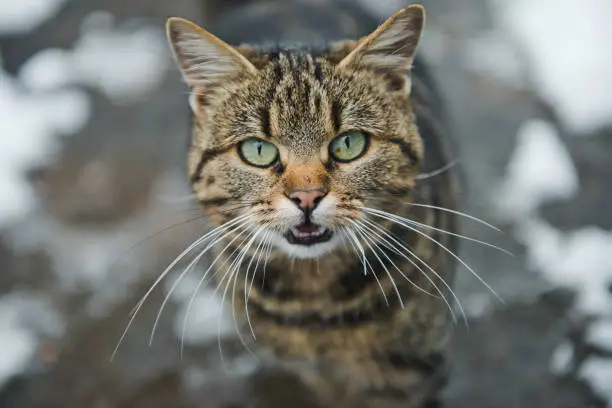
IV. Care and Maintenance of Bengal Cats :
Grooming Needs :
Bengal cats are known for their sleek and beautiful coats, which require specific care and maintenance to keep them in optimal condition. Here’s a comprehensive guide to the grooming needs of Bengal cats:
Coat Maintenance
- Brushing: Bengals have a short to medium-length coat that is generally low-maintenance. Regular brushing once a week is usually sufficient to remove loose hairs and minimize shedding. Use a soft-bristle brush or a grooming mitt to keep their coat shiny and healthy.
- Bathing: Bengal cats are generally good at keeping themselves clean, and frequent bathing is not typically necessary. However, an occasional bath can help if they get particularly dirty. Use a mild cat-specific shampoo and ensure thorough rinsing to avoid any residue that can irritate their skin.
Nail Trimming
- Frequency: Trim your Bengal’s nails every 2-4 weeks. Regular trimming helps prevent overgrown nails and potential injury from scratching.
- Tools: Use a pair of sharp, high-quality cat nail clippers. Be careful to avoid cutting into the quick, which is the pink area inside the nail that contains blood vessels and nerves.
Ear Cleaning
- Inspection: Check your Bengal’s ears weekly for any signs of dirt, wax buildup, or infection.
- Cleaning: Use a damp cotton ball or a soft cloth to gently wipe the outer part of the ear. Avoid inserting anything into the ear canal. If you notice excessive wax or an odor, consult your veterinarian.
Dental Care
- Brushing: Regular brushing of your Bengal’s teeth is important to prevent dental issues. Aim to brush their teeth a few times a week using a cat-specific toothbrush and toothpaste.
- Dental Treats: Provide dental treats and toys that help reduce plaque and tartar buildup.
Eye Care
- Inspection: Check your Bengal’s eyes regularly for any signs of discharge, redness, or irritation.
- Cleaning: Use a damp cloth or a cotton ball soaked in warm water to gently wipe away any debris from the corners of their eyes.
General Health and Hygiene
- Litter Box: Keep the litter box clean and fresh. Scoop it daily and change the litter at least once a week. Bengals are known for being particular about their litter boxes, and maintaining cleanliness can prevent litter box aversion.
- Regular Vet Visits: Schedule regular veterinary check-ups to monitor your Bengal’s health and catch any potential issues early. Ensure they are up-to-date on vaccinations, flea, tick, and parasite prevention.
Coat Conditioning
- Diet: A healthy diet contributes significantly to the condition of your Bengal’s coat. Ensure they receive a balanced diet rich in essential nutrients, including omega-3 and omega-6 fatty acids, which promote healthy skin and a shiny coat.
- Supplements: If needed, consider adding supplements to their diet, such as fish oil, to enhance coat health. Consult your veterinarian before introducing any new supplements.
Health Considerations :
- Regular Veterinary Check-ups: Schedule routine check-ups with a veterinarian to monitor your Bengal’s overall health, detect any potential issues early, and ensure they are up-to-date on vaccinations and preventive care.
- Genetic Health Screening: Consider genetic testing for common hereditary conditions such as Hypertrophic Cardiomyopathy (HCM) and Progressive Retinal Atrophy (PRA), especially if you’re obtaining a Bengal kitten from a breeder.
- Parasite Prevention: Use regular flea, tick, and worm prevention treatments to protect your Bengal from parasites that can affect their health.
- Dental Care: Practice good dental hygiene by brushing your Bengal’s teeth regularly and providing dental treats or toys to help prevent dental issues.
Nutrition :
- High-Quality Diet: Provide a balanced diet formulated specifically for cats, with a focus on high-quality protein sources. Look for cat food that lists meat as the primary ingredient and meets the nutritional guidelines set by organizations like the Association of American Feed Control Officials (AAFCO).
- Portion Control: Monitor your Bengal’s food intake and adjust portion sizes based on their age, weight, activity level, and any health concerns. Avoid overfeeding, which can lead to obesity and related health issues.
- Hydration: Ensure your Bengal has access to fresh, clean water at all times to prevent dehydration and promote overall health.
- Special Considerations: Some Bengals may have dietary sensitivities or specific nutritional needs. Consult your veterinarian for personalized dietary recommendations if you notice any digestive issues or allergies.
Exercise :
- Physical Activity: Bengals are active and playful cats that require regular exercise to maintain their physical and mental well-being. Engage them in interactive play sessions with toys such as feather wands, laser pointers, and puzzle toys that stimulate their natural hunting instincts.
- Indoor Environment Enrichment: Create an enriching indoor environment for your Bengal with cat trees, scratching posts, tunnels, and perches to encourage climbing, jumping, and exploration.
- Outdoor Access: If you provide outdoor access for your Bengal, ensure they have a safe and secure outdoor enclosure or supervised outdoor time to prevent accidents, exposure to toxins, and encounters with other animals.
- Environmental Enrichment: Rotate toys regularly and provide new and stimulating experiences to prevent boredom and encourage mental stimulation.
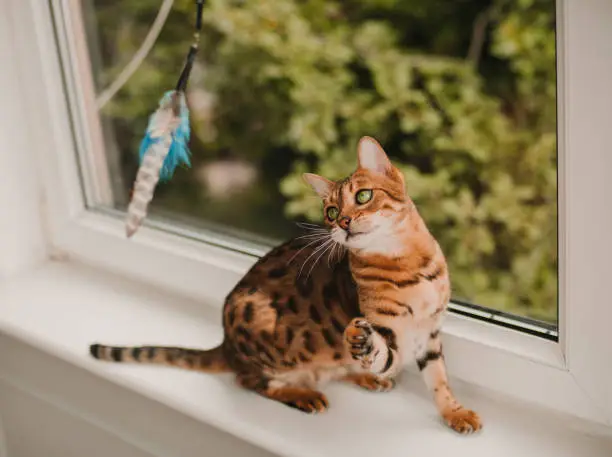
VII. Conclusion
In conclusion, Bengal cats are captivating creatures that captivate both the eye and the heart. With their stunning appearance reminiscent of their wild ancestors and their affectionate and playful personalities, Bengals make wonderful companions for individuals and families alike.
When considering bringing a Bengal cat into your home, it’s important to understand their unique needs. From their grooming requirements to their health considerations, proper care and attention are essential to ensuring their well-being. By providing a balanced diet, regular veterinary check-ups, and plenty of opportunities for exercise and mental stimulation, you can help your Bengal cat thrive and live a long and happy life.
Whether they’re scaling their favorite cat tree or curling up in your lap for a cuddle, Bengal cats bring joy and excitement to any household. With the right care and love, your Bengal companion will undoubtedly become an integral part of your family, enriching your life with their charm and affection for years to come.
FAQ about Bengal Cat Breed :
Where can I find Bengal cats for adoption or purchase?
Bengal cats can be found through reputable breeders, rescue organizations, and animal shelters. It’s essential to do thorough research and choose a responsible breeder or adoption agency that prioritizes the health and well-being of the cats.
How long do Bengal cats live?
With proper care and attention, Bengal cats can live anywhere from 12 to 16 years or more. Providing a healthy diet, regular veterinary care, and a stimulating environment can contribute to their longevity.
Are Bengal cats good with children and other pets?
Generally, Bengal cats are sociable and can get along well with children and other pets when properly socialized from a young age. However, it’s essential to supervise interactions and teach children how to handle and respect cats to prevent any mishaps.
Are Bengal cats friendly?
Yes, Bengal cats are typically known for their friendly and affectionate nature. They often form strong bonds with their owners and enjoy interactive play and cuddling.

